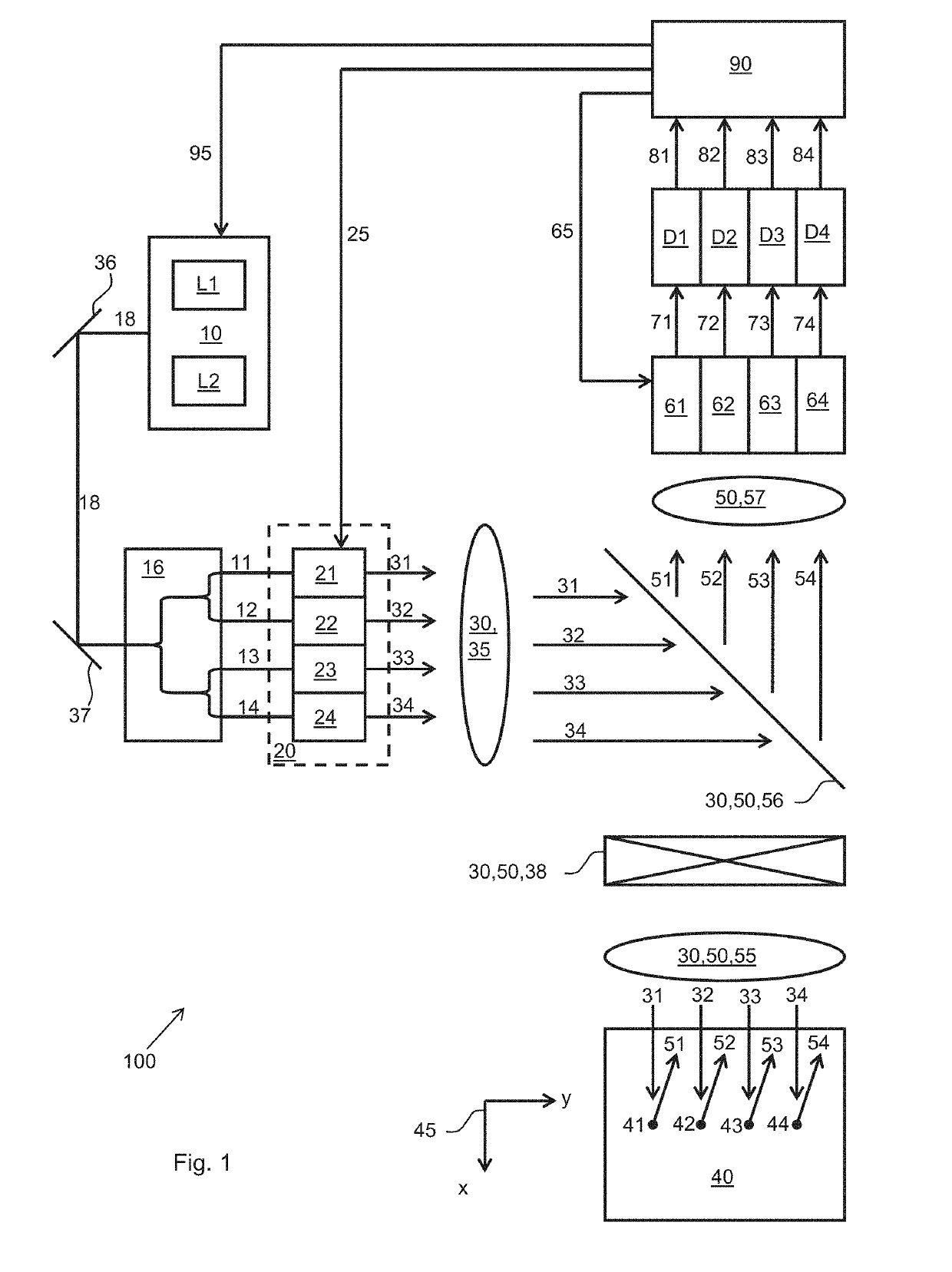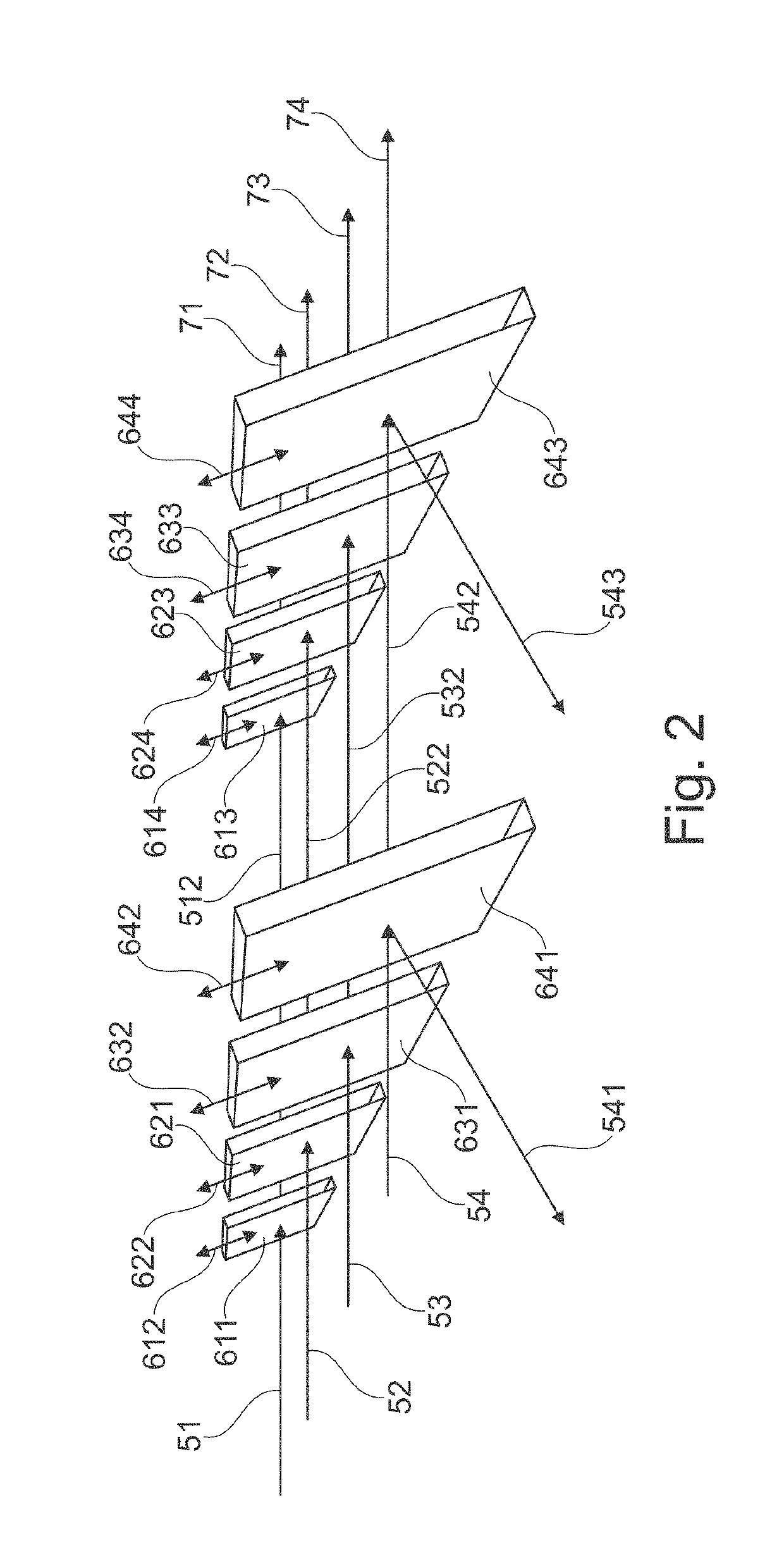Device and method for multispot scanning microscopy
a multi-spot scanning and microscopy technology, applied in the field of multi-spot scanning microscopy devices, can solve the problems of affecting the image quality of the image, the method continues to have a series of problems, and the image recording is relatively slow, so as to reduce the damage of the photo, avoid spectral cross-excitation, and increase the scanning speed
- Summary
- Abstract
- Description
- Claims
- Application Information
AI Technical Summary
Benefits of technology
Problems solved by technology
Method used
Image
Examples
Embodiment Construction
[0062]The basic principle for the measurement with the device according to the invention is based on a laser scanning microscope. The optical arrangement of the microscope is designed so that operation in a parallel mode is optically produced. It is crucial that a plurality of illumination light beams can be coupled into the microscope.
[0063]A certain number of laser lines can be offered to this microscope for spectral illumination. Firstly it is irrelevant whether they are discrete laser lines, a tunable laser or a white light laser. In addition it is insignificant whether the lasers are continuous or pulsed. Finally the usability of the invention is not limited to certain excitation mechanisms such as for example the usual fluorescence excitation. Non-linear processes, in particular two-photon processes, such as in two-photon fluorescence or CARS microscopy, can be used. These spectral components can be mirrored, in particular using a main colour splitter, into the optical path of...
PUM
| Property | Measurement | Unit |
|---|---|---|
| resonance frequencies | aaaaa | aaaaa |
| multispot scanning microscopy | aaaaa | aaaaa |
| spectral composition | aaaaa | aaaaa |
Abstract
Description
Claims
Application Information
 Login to View More
Login to View More - R&D
- Intellectual Property
- Life Sciences
- Materials
- Tech Scout
- Unparalleled Data Quality
- Higher Quality Content
- 60% Fewer Hallucinations
Browse by: Latest US Patents, China's latest patents, Technical Efficacy Thesaurus, Application Domain, Technology Topic, Popular Technical Reports.
© 2025 PatSnap. All rights reserved.Legal|Privacy policy|Modern Slavery Act Transparency Statement|Sitemap|About US| Contact US: help@patsnap.com



